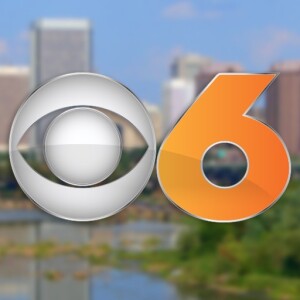RICHMOND, Va. -- The partial solar eclipse will begin in Richmond, Virginia at 2:02 p.m. The sun will be 83% covered for a few minutes at 3:18 p.m. The eclipse in Richmond, Virginia will end at 4:31 p.m.
Do not look at the eclipse without special glasses.
The path of totality (where the sun is 100% covered) will include parts of Indiana, Ohio, northwestern Pennsylvania, and western and northern New York state.
What is a solar eclipse?
A solar eclipse happens when the moon gets directly in between the Earth and the sun. Essentially, the moon is casting its shadow on the Earth.
These events can only ever happen during the new moon phase. A lunar cycle takes 29.5 days, but solar eclipses don't always happen during new moons. Usually, the moon's shadow goes just above or just below the earth.
But on April 8, the shadow will go directly over parts of North America.

Grab your glasses! Everything to know about today's solar eclipse
What is the difference between a partial and total solar eclipse?
For most Americans, they will get to view — with proper eye protection — a partial solar eclipse. That is when the moon blocks some of the sun's light, but not all. Many major Northeastern U.S. cities can witness over 80% of the sun's light being blocked by the moon.
The total eclipse is far more spectacular. That is when the moon blocks all of the sun's light from directly reaching the Earth. The only visible part of the sun is its corona, which makes up the sun's outermost gases.
Even for areas that will have over 50% of the sun blocked, the effects of a solar eclipse are barely noticeable.
“If you're near the path of totality, take a couple hours off work or school and get in the car and just drive as close as you can to the middle of it. You don't need any special place, just a safe place to park your car and get out," said Terry Virts, retired NASA astronaut.
What will I see during a total solar eclipse?
Besides the sun's corona, the sky will become twilight-dark. It will also be possible to see some of the brightest stars and planets, including Venus and Jupiter. These moments will be fleeting, however.
Totality will last anywhere from a few seconds to just over four minutes, depending on how close to the center of the path of totality you are.
It won't be midnight-dark outside but similar to the brightness just after dusk.
What will I need to view the total solar eclipse?
A total solar eclipse can be viewed without any eye protection — but only for the up-to-four minutes of totality is it safe to view the eclipse without eye protection.
For most of the duration of the eclipse, you will need to view the eclipse with glasses. NASA said solar eclipse glasses should be marked with ISO 12312-2 on them to confirm they are safe for usage during a solar eclipse.
Eclipse glasses can be reused indefinitely as long as they don't have any scratches or blemishes on the lens.
If you're unable to find eclipse glasses, another option is to make a pinhole camera using paper, a push pin, tape, scissors, and paper clip.

NASA: Don't point cellphones directly at sun while taking eclipse pics





